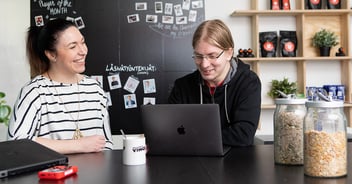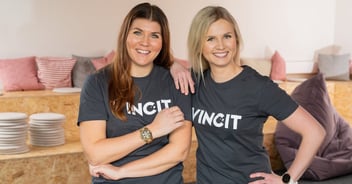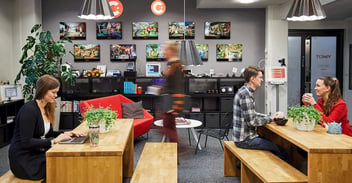The previous parts of our “Five-star candidate experience” blog series have dealt with candidate communications and chats, which is what we call our laid-back job interviews. In this entry, we’ll take a look at the final steps of the recruitment process: signing an employment contract and the dawning of the employee experience.
Job offer
After the final chat, the candidate who gets chosen for a position receives a job offer in their email. The offer contains the essential conditions and benefits of the contract, a salary offer and our suggestion for the employment start date. Should any questions about things such as parking, the collective agreement and other practical matters arise at this point, we’ll be happy to answer them as well. The job offer is meant to be straightforward and to the point and to aid the employee’s decision making.
An optional bonus phase: meeting new coworkers over coffee
When we send our candidate the job offer, we also ask them whether they’d like to meet their future colleagues over coffee at our office before making their final decision. Even COVID-19 hasn’t stopped to this practice – even when meeting at the office has been out of bounds, we’ve organized coffee breaks over Google Meets and sent Vincit’s very own coffee grind to the candidate via snail mail.
For many, a well-functioning work community and knowledgeable and nice coworkers factor in on the final decision to take on a job. Particularly those having to consider more than one job offer are usually happy to take up the offer. Providing this opportunity means we are able to put to rest any last bit of doubt about our recruitment process giving a rose-tinted view of our every-day life. The idea behind the invitation (as well as the entire recruitment process) is to talk about the day-to-day work as directly and plainly as possible. Talking over coffee allows for a more detailed conversation with people who work on similar tasks and gives the candidate an opportunity to talk about topics their most interested in. It ultimately works to everyone’s advantage that no stone is left unturned when it comes to getting a realistic image about the daily grind.
Employment contract
Luckily, most of those who get to the job offer phase also want to join us (for those who use the coffee opportunity the hit rate is probably very close to 100%), so next we get to work on the employment contract. We strive to give a good first impression, since the contract will hopefully mark the beginning of one our employee’s most meaningful and amazing professional relationships.
Our employment contract meeting can be organized either at the office or remotely. The meetings are usually more than mere exercises in bureaucracy, although they can involve just signing the papers if the employee wants to get straight to the point with maximum efficiency. More often than not, contract-related meetings are handled together with the employee’s very own People person (in other words, their closest People team representative responsible for HR-related matters).
During the meeting, the employee also gets their very own Newbie Trello, which has been particularly designed for Vincit’s needs. The Trello board in question consists of 64 task cards which provide all the necessary onboarding information and essential general guidance needed during the first days at a new job regardless of position (e.g. information about ordering work tools and transferring one’s telephone subscription). At this point, there’s normally also talk about the new employee’s ideal project and project team, and the employee’s wishes are written down for the sales team’s use.
At the end of the meeting, we agree on some practical matters regarding the first day and wish the employee good luck with tying up any loose ends before starting with us. The next time we meet, we’ll be working together.
Embarking on an employee experience journey
A successful recruitment process gives us quite a bit of information on our new employee. When preparing the job contract, we concentrate not only on getting the social security number right but also on getting to know our new Vincitizen. As we begin our correspondence about the new job and the initial nervousness fades away, we get valuable information on the employee’s personality and life situation. The talks give us a surprisingly good idea about the type of support the employee is going to need during the first few weeks, the emphasis they put on feeling safe, the stress that starting at a new job will cause, and the kind of peer support, ‘buddy’, they’re going to need during the onboarding process in addition to their own people person.
This begins our shared, individual leadership and LaaS ideology (Leadership as a Service) -based journey with our new Vincitizen. At the same time, the person’s existing candidate experience metamorphoses into the foundation of the employee experience. In the next blog series by Vincit’s recruitment and people teams, we’ll delve into this employee experience and what it entails, starting from onboarding. The entry will also provide tips on remote onboarding! Stay tuned!



